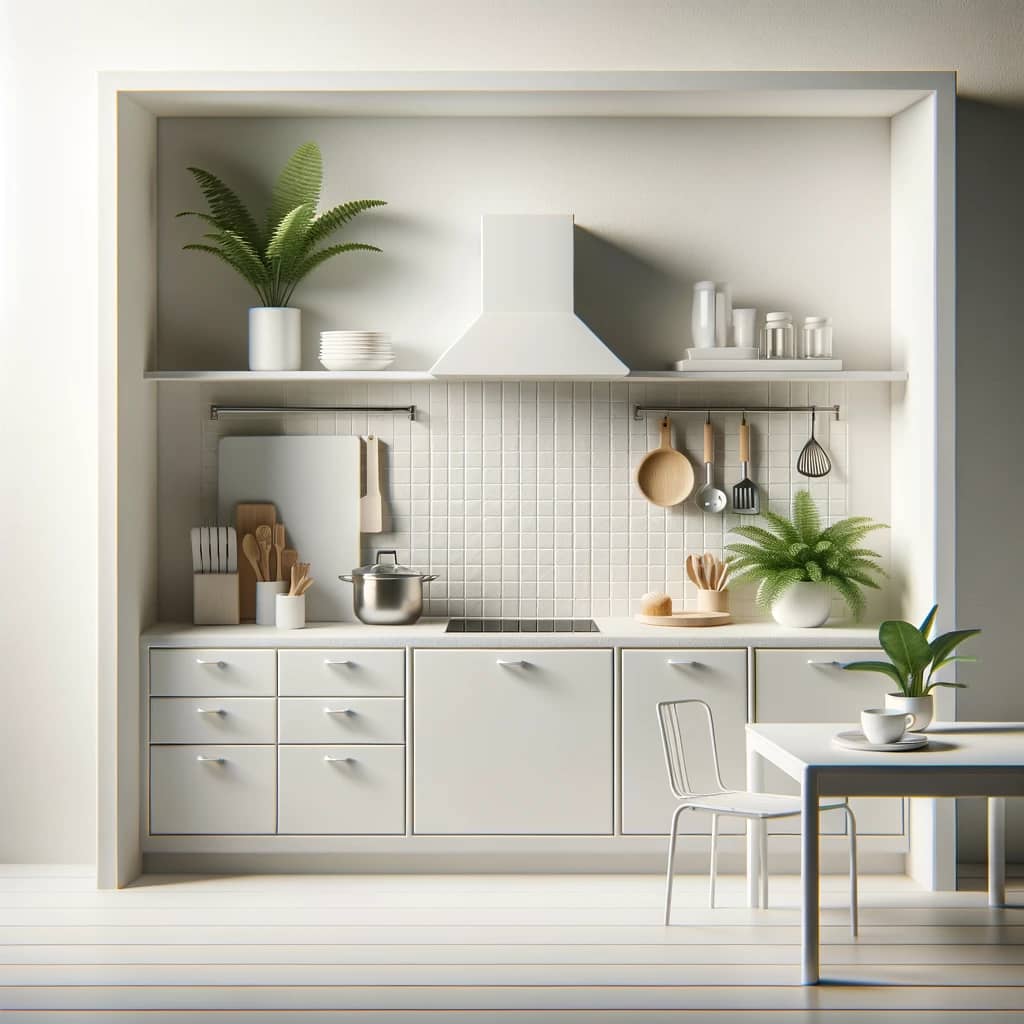Minimalism in an age of Consumerism
In an age where consumerism is often equated with success and happiness, the concept of minimalism presents a stark, yet profoundly liberating contrast. At its core, minimalism is about paring down life to its essentials, finding value not in possessions but in experiences and relationships. This lifestyle, characterized by the intentional reduction of one’s belongings and desires, has far-reaching implications beyond the simplicity of a decluttered space. It can lead to substantial wealth accumulation, both in financial terms and in the quality of life. This article explores the journey from minimalism to wealth, unraveling how a lifestyle centered on less can indeed lead to more.

The Philosophical Roots of Minimalism
Minimalism, as a concept, isn’t a modern invention. Its roots can be traced back to various philosophical and religious traditions that advocate for simplicity and intentional living. From the ascetic lives of Buddhist monks to the stoic philosophy of ancient Greece and Rome, the principle of finding contentment with minimal material possessions has been a recurring theme. In the 20th century, minimalism found expression in art and design, emphasizing simplicity and functionality in creation. However, it’s the translation of these principles into personal lifestyle choices that has sparked a contemporary movement toward living minimally.
The evolution of minimalism into a lifestyle can be seen as a response to the excesses of modern consumerism. It challenges the narrative that happiness and success are directly correlated with the accumulation of material wealth. Instead, minimalism proposes a radical idea: wealth is not about having more, but about needing less. This shift in perspective invites individuals to reassess their definitions of success and fulfillment.
Minimalism in Practice: A Lifestyle Choice
Adopting minimalism as a lifestyle involves more than decluttering physical spaces. It’s a deliberate choice to prioritize what truly matters and to eliminate excess in all areas of life. Here are practical steps to embrace minimalism:
- Assess and Eliminate: Begin by evaluating personal belongings and keeping only those that serve a purpose or bring joy. This process extends to commitments, activities, and relationships that do not add value to life.
- Quality Over Quantity: In making new acquisitions, prioritize the quality of items over the quantity. This approach not only reduces clutter but also encourages a more sustainable and thoughtful consumption pattern.
- Simplify Finances: Minimalism in finances means simplifying the way money is managed, from consolidating accounts to automating savings. It emphasizes living within means, avoiding debt, and focusing on saving and investing for the future.
- Mindful Consumption: Becoming a minimalist involves being mindful of the environmental and social impact of consumption choices. It advocates for ethical consumption, supporting sustainable and fair-trade practices.
The transition to a minimalist lifestyle is accompanied by a profound psychological shift. It’s marked by a decrease in the stress associated with maintaining and acquiring possessions, leading to greater mental clarity and focus. There’s a newfound appreciation for the present moment, relationships, and experiences that truly enrich life.
Minimalism and Financial Freedom
The path to financial freedom is often envisioned as a road paved with high earnings and savvy investments. Yet, minimalism introduces a different strategy: increasing wealth by decreasing wants. This section delves into how minimalism can lead to significant financial savings and, ultimately, financial independence.
One of the most immediate benefits of adopting a minimalist lifestyle is the reduction in unnecessary expenses. Minimalists tend to scrutinize every purchase, asking whether it’s necessary and how it aligns with their values. This leads to a natural decrease in spending on non-essential items and services, allowing for more money to be allocated towards saving and investing. Furthermore, minimalism encourages the use of items to their fullest extent, reducing the constant need for replacements or upgrades and thus, further lowering expenditure.
Case studies of individuals who have embraced minimalism reveal a common narrative: a dramatic increase in savings rates, freedom from debt, and the ability to pursue work that is meaningful rather than merely lucrative. These stories highlight the power of minimalism to transform personal finances, providing a buffer against economic uncertainties and a step towards financial independence.

The Environmental Impact of Minimalism
Beyond personal financial benefits, minimalism offers significant environmental advantages. In a world grappling with the consequences of overconsumption and waste, the minimalist ethos of buying less and choosing well is a beacon of sustainability. By reducing the demand for new products, minimalism helps decrease the strain on natural resources, lowers carbon footprints, and contributes to a reduction in the waste that ends up in landfills.
Minimalism also promotes a shift towards sustainable living practices, such as recycling, repurposing, and investing in renewable resources. These practices not only align with environmental sustainability goals but also foster a deeper connection with the natural world, encouraging a lifestyle that respects and preserves the planet for future generations.
Challenges and Criticisms of Minimalism
Despite its benefits, minimalism is not without its challenges and criticisms. Some argue that minimalism is a privilege, accessible only to those who can afford to choose simplicity over necessity. Others perceive it as a trend, popularized by social media, that oversimplifies complex issues of consumption and sustainability.
Addressing these criticisms requires acknowledging the diverse ways in which minimalism can be practiced. It’s not a one-size-fits-all solution but a flexible framework that can be adapted to different life circumstances and goals. Overcoming the challenges of minimalism often involves a deeper exploration of one’s values and priorities, leading to a more conscious and intentional way of living.
Conclusion
The journey from minimalism to wealth is not measured merely in financial terms but in the richness of experiences and the depth of fulfillment that comes from living with less. By challenging the conventional wisdom that more is better, minimalism offers a pathway to a more sustainable, mindful, and financially secure life. Whether it’s through the reduction of personal belongings, the intentional use of resources, or the cultivation of meaningful relationships, minimalism teaches that the true luxury lies in the freedom and clarity that comes with choosing less. In the end, the minimalist pursuit of wealth is not about accumulating riches but about rediscovering the abundance of a life well-lived.
Preserve and Diversify your assets with a Gold IRA!
Minimalism is a lifestyle choice focused on simplifying one’s life by reducing material possessions and living with only what is necessary. It emphasizes the value of experiences and relationships over the accumulation of things.
By adopting a minimalist lifestyle, individuals can significantly reduce their expenses, save more money, and invest in their futures. The reduction in consumerist behaviors leads to financial freedom and a richer, more fulfilling life.
Yes, many people who practice minimalism report higher levels of happiness. This is attributed to reduced stress from managing fewer possessions, more time and energy for meaningful activities, and stronger relationships.
While decluttering is a part of minimalism, the lifestyle goes beyond just physical possessions. It’s about minimizing distractions and focusing on what truly matters in life, including health, relationships, and personal growth.
Begin by assessing your possessions and identifying what you truly need and value. Gradually declutter and simplify your living space, commitments, and lifestyle. Focus on quality over quantity in future acquisitions.
Not necessarily. Minimalism is about finding value in simplicity and making intentional choices. Many minimalists invest in high-quality items that last longer and bring them joy, rather than accumulating many cheaper, less meaningful items.
Yes, minimalism promotes reducing consumption, reusing, and recycling, which all contribute to environmental sustainability. By consuming less and choosing sustainable options, minimalists can reduce their carbon footprint and support a healthier planet.





